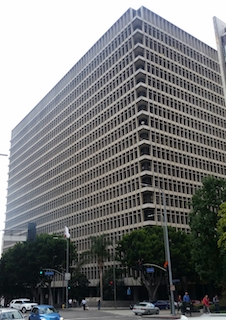On October 8, 2021, Governor Gavin Newsom signed Assembly Bill 333, which will be effective January 1, 2022. The new law narrows what can be legally considered a “pattern of criminal gang activity” in Penal Code § 186.22 and changes the procedure for trial on gang enhancements.
The purpose of the new law is to remedy inequities in the criminal justice system brought about by the 1987 STEP Act (which provides for enhanced punishment for gang participation and gang crimes), which historically affects neighborhoods impacted by poverty, racial inequality, and mass incarceration.
Brief Synopsis: Assembly Bill 333 significantly helps defendants by amending Penal Code § 186.22 in revising the definition of “Pattern of Criminal Activity” by making the benefit more than reputational to the gang, which in the past was really the only benefit, and narrows the types of crimes that can constitute a pattern of criminal activity (vandalism and looting are no longer included).
In enacting AB 333, the Legislature stated that it did not find that gang activity or participation was affected by existing law punishing active membership in a gang or enhancing sentences for crimes committed to promote, assist or further a gang. In fact, the bill explains that California reduced its prison population from about 163,000 in 2011 to about 125,000 in 2019. Yet during these years, the number of incarcerated people serving a gang enhancement increased by almost 40 percent. In Los Angeles alone, the state’s largest jurisdiction, over 98 percent of people sentenced to prison for a gang enhancement are people of color.
It is important, first, to understand that section 186.22 has two parts. First, § 186.22(a) makes it a misdemeanor or a felony, to “actively participate in a criminal street gang “with knowledge that its members engage in, or have engaged in, a pattern of criminal gang activity and to willfully promote, further, or assist in felonious criminal conduct by members of that gang.” Punishment as a misdemeanor can be up to one year in county jail; as a felony up to three years in state prison.
 Clara Shortridge Foltz Criminal Courts Building CCB Los Angeles
Clara Shortridge Foltz Criminal Courts Building CCB Los Angeles
A criminal street gang is defined as three or more people who have a common name, identifying symbol or identifying sign. The group must have as one of its primary activities the commission of any one or more of a long list of crimes considered gang crimes (i.e., robberies, assaults, carjackings, murders, etc.) and the gang engage in a pattern of such activity either as a group or with members committing the offenses alone.
Section 186.22(b) provides for sentencing enhancements when a crime is committed for the benefit of, at the direction of, or in association with, a criminal street gang with the specific intent is committed to “assist in, further or promote” criminal conduct by the gang members. It is important to note that defendant need not be a gang member to violate 186.22(b).
Punishment for this sentencing enhancement is two, three or four years if it involves a non-serious non-violent felony, five years if it is a serious felony (as defined by Penal Code § 1192.7(c)), ten years if it is violent felony (as defined by Penal Code § 667.5(c)), and fifteen years to life it is a specified felony, i.e., a home-invasion robbery (Penal Code § 213(a)(1)(A), carjacking (Penal Code § 215) or shooting a firearm at an inhabited dwelling (Penal Code § 246) or causing great bodily injury or death by shooting a gun from a car (Penal Code § 12022.55).
Existing law defines “pattern of criminal gang activity” for this purpose as the commission of, attempted commission of, conspiracy to commit, or solicitation of, sustained juvenile petition for, or conviction for two or more of a list of specified offenses, provided at least one of these offenses occurred after the effective date of these provisions and the last of those offenses occurred within three years after a prior offense, and the offenses were committed on separate occasions, or by two or more persons. Under existing law, the specified offenses to form a pattern of criminal gang activity include, among others, burglary, looting, felony vandalism, and various personal identity fraud crimes.
Under the revised section 186.22, the “pattern of criminal gang activity” must result in a benefit that is “more than reputational” to the gang, such as financial gain, retaliation, targeting a gang rival, or intimidating or silencing a witness.
AB 333 also removes looting, felony vandalism, and certain personal identity fraud violations from crimes defining a pattern of criminal gang activity.
In addition, the currently charged crime cannot be used to prove the pattern of criminal gang activity, which is significant because using the currently charged crime to prove, in the past, a pattern was exactly how prosecutors made gang cases out of thin air.
Under the new Penal Code § 1109, guilt on the underlying offense or a substantive gang charge must be heard prior to the proceeding on the gang enhancement, when requested by the defense. Obviously, this would seem prudent to request, especially when the evidence is thin on the underlying offense and gang evidence can be extremely prejudicial to a defendant. Such evidence is often mixed in with evidence presented about the underlying crime, helping the prosecution win convictions on otherwise weak cases.
For more information about prior law on gang enhancements that may have been changed by AB 333, please click on the following articles:
 Clara Shortridge Foltz Criminal Courts Building CCB Los Angeles
Clara Shortridge Foltz Criminal Courts Building CCB Los Angeles